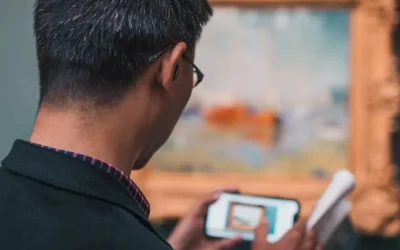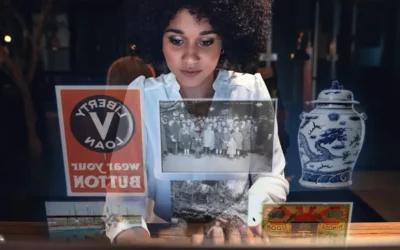Three Social Media Platforms Museums Must Adopt

Ron Aspe
Social media platforms offer a game-changing opportunity for museums to broaden their reach and connect interesting and inspiring collections with potential visitors and donors. With social media, word of mouth spreads at the speed of light, effectively crowd-sourcing museum marketing.
It’s all about MAU:
Monthly Active Users, otherwise known as MAU, is defined as the number of unique users within the previous 30 days. Here are some earth-shattering statistics:
1.654 billion unique users visit Facebook every month to find out what their friends are doing or what they are interested in. If only one person posts a selfie in your museum and says how cool it is, the average number of Facebook Friends who will see it is in the hundreds. This is much better than advertising—it’s a public endorsement of your brand that costs you absolutely nothing. No need to feel guilty about riding Facebook’s coat tails; their revenue exceeded 17 billion per year.
You and I might not be big on Facebook, but lots of people are. (I suspect they might be people with a little more time on their hands than you and I have.) It seems that adults without children (at home or otherwise) are the biggest users. Your museum needs to cultivate the under-30 crowd to ensure long-term viability. The over-50 group should also receive specific attention, because they have the time and money to visit as well as financially support your organization.
310 million unique Twitter users regularly check the microblogging site to follow topics, people or organizations of interest to them. Once someone decides to follow someone or something, they automatically receive updates to their mobile phone. Three points to ponder:
1) Disaster planning organizations now recommend the use of Twitter to publish situational updates. If you can get people to follow your museum on Twitter you will have instant access to them.
2) Barack Obama has 75 million followers. He was the first president to use social media to help get elected; that’s how powerful it is.
3) 37% of internet users between 18 and 29 years of age use Twitter. Convert them when they are young. Just promise you will use your powers for good and not evil!
Pinterest:
At 50 million MAU visits, Pinterest is the next challenger in the social media game. Described by Wikipedia as a photo sharing site, Pinterest lets people and organizations create digital bulletin boards, or “Pinboards,” of images, videos and other objects.
In June 2015, Pinterest was valued at a staggering $11 billion. Apparently, it has lot of potential as a social media platform which can be easily commercialized. Brand studies continue to show Pinterest is more effective at driving sales than other forms of social media. The same may be true about driving visitors to your museum.
People might not read, but they do look. As a visual platform, Pinterest is ideal for displaying collection highlights. It takes very little effort to create an impressive and dynamic Pinboard that visitors can browse—and if they like something, they can save individual pins to one of their own boards. Museums as diverse as the London Natural History Museum and the Button Art Museum in Vancouver are all using this low cost, highly effective method of engaging the next generation of museum visitors, and inspiring museum visits.
Free advertising for your museum
Make social media marketing part of your strategy for visitor attraction and engagement. And choose a collection management platform (like Lucidea’s Argus) that’s a snap to integrate with social media channels and search engines like Google. Before you know it, everyone who visits or browses online will be promoting your museum by “liking, tweeting or pinning”—without any effort on your part. What’s not to like about that?

Ron Aspe
Stan writes regularly for Lucidea’s Think Clearly blog. Subscribe to ensure you never miss a post with engaging information for KM practitioners and special librarians! Learn about Lucidea’s Presto, SydneyDigital, and GeniePlus software with unrivaled KM capabilities that enable successful knowledge curation and sharing.
Similar Posts
Storytelling to Inspire Reflection Using Museum Collections Online
Storytelling with online collections is impactful, whether we choose online-only or as part of a hybrid approach to museum exhibitions.
Museum Collections Online: Learning Through Storytelling
Digitizing museum collections introduces new and engaging opportunities for storytelling. By leveraging digital surrogates—essentially online representations of physical objects—museums can enhance how they present narratives and information to audiences.
The Role of Museum Collections Online in Storytelling & Audience Engagement
Storytelling with museum collections online allows for a great degree of flexibility, offers additional detail, and lends a dynamism that is difficult to produce within a physical exhibition.
Examples of How Archives Can Be Used to Elevate Museum Collections
Last week we reviewed how archives can enhance museum collections online. This week will continue our work with an examination of specific examples, including what items different types of archives may contain and where to capture this data.



